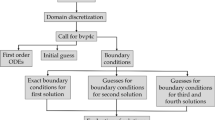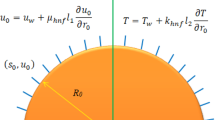Abstract
The effect of a small Xe additive on the conditions of detonation initiation in incident shock waves of various intensities is studied. The experiments are carried out on a shock tube facility with 10% H2 + 5% O2 + 85% He, 10% H2 + 5% O2 + 84.75% He + 0.25% Xe, and 10% H2 + 5% O2 + 84.5% He + 0.5% Xe mixtures. The addition of Xe led to a shift in the detonation threshold toward weaker shock waves. This effect is probably due to a significant increase in the frequency of high-energy collisions between O2 and Xe molecules in the shock wave front in comparison with that characteristic of the equilibrium behind the wave, a factor that significantly accelerates the chemical reaction between O2 and H2 behind the front. The effect is a consequence of the formation of a specific translational nonequilibrium in the wave front. A previously performed numerical study of the distributions of pairs of O2 and Xe molecules in the shock wave front shows that this effect can be enhanced by decreasing the Xe concentration from 0.5 to 0.25%. The experiment performed indirectly confirms this conclusion. It turns out that, for the mixture with 0.25% Xe, the detonation threshold shifts more strongly to the region of weaker shock waves than for the mixture with 0.5% Xe. This result gives additional arguments in favor of the assumption that this effect is due to the specifics of the translational nonequilibrium in the wave front.
Similar content being viewed by others
References
T. V. Bazhenova, A. V. Emelianov, A. V. Eremin, and V. Y. Velicodny, in Proceedings of the International Symposium on Shock Waves ISSW-21, Great Keppel, Australia, 1998, Ed. by A. Howling, p. 195.
V. Yu. Velikodnyi, A. V. Emel’yanov, and A. V. Eremin, Tech. Phys. 44, 1150 (1999).
A. V. Emeliyanov, A. V. Eremin, and S. V. Kulikov, Tech. Phys. 58, 647 (2013).
O. G. Divakov, A. V. Eremin, V. S. Ziborov, and V. E. Fortov, Dokl. Chem. 373, 141 (2000).
V. Yu. Velikodnyi and V. A. Bityurin, Khim. Fiz. 16 (9), 14 (1997).
S. V. Kulikov and G. B. Manelis, Dokl. Chem. 382, 29 (2002).
S. V. Kulikov, G. B. Manelis, and O. N. Ternovaya, Russ. J. Phys. Chem. B 1, 250 (2007).
O. I. Dodulat, Yu. Yu. Kloss, and F. G. Cheremisin, Fiz. Khim. Kinet. Gaz. Dynam. 14 (1) (2013). http://www.chemphys.edu.ru.
Shock Tubes, Collection of Articles, Ed. by Kh. A. Rakhmatullin and S. S. Semenov (Inostr. Liter., Moscow, 1962) [in Russian].
Ya. B. Zel’dovich, A. P. Genich, and G. B. Manelis, Sov. Phys. Dokl. 24, 756 (1979).
S. V. Kulikov, Shock Waves 7 (1), 25 (1997).
E. V. Stupochenko, S. A. Losev, and A. I. Osipov, Relaxation Processes in Shock Waves (Nauka, Moscow, 1965) [in Russian].
S. V. Kulikov, Russ. J. Phys. Chem. B 2, 894 (2008).
Author information
Authors and Affiliations
Corresponding author
Additional information
Original Russian Text © S.V. Kulikov, N.A. Chervonnaya, 2018, published in Khimicheskaya Fizika, 2018, Vol. 37, No. 1, pp. 66–70.
Rights and permissions
About this article
Cite this article
Kulikov, S.V., Chervonnaya, N.A. Influence of Small Xe Additives on the Detonation Threshold for O2−H2−He Mixtures. Russ. J. Phys. Chem. B 12, 98–102 (2018). https://doi.org/10.1134/S1990793118010098
Received:
Published:
Issue Date:
DOI: https://doi.org/10.1134/S1990793118010098




